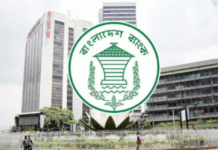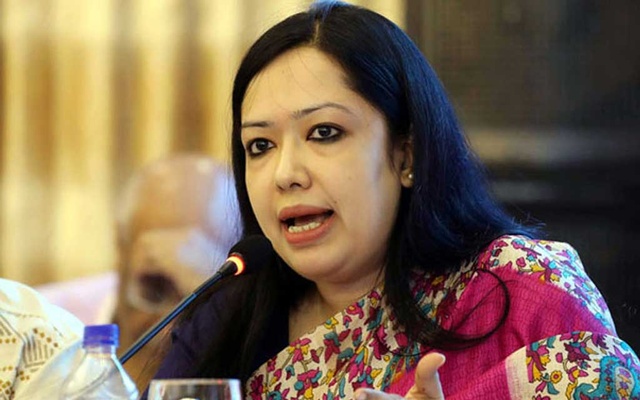
Highlights:
- 91-day treasury bills rate drops to 10.45%
- All treasury bills rates fall below 11% in auction
- Rates hit four-month low after July’s steady decline
- June rates peaked above 12% across all tenures
- Reduced govt borrowing, increased liquidity push rates lower
The interest rate on 91-day treasury bills has dropped below 10.5%, driven by reduced government borrowing from the banking sector in the first quarter of the fiscal year and increased liquidity in the money market.
According to Bangladesh Bank data, the central bank conducted an auction of treasury bills across three tenures yesterday. The interest rate on 91-day treasury bills fell to 10.45% in this latest auction, compared to 11.58% in the previous auction held on 13 July – marking a sharp drop of 1.13 percentage points in just one week.
Rates for other tenures also declined. The 182-day treasury bills rate fell by 85 basis points to 11.70%, while the 367-day bills rate dropped by 27 basis points to 10.98%.
An analysis of Bangladesh Bank data shows that the interest rate on 91-day treasury bills reached an all-time high of 12.10% in the auction held on 16 June. Similarly, the rates for 182-day and 367-day treasury bills peaked at 12.11% and 12.24%, respectively. Throughout June, the rates for these bills remained above 12%.
However, since early July, interest rates have been declining steadily. In the latest auction held yesterday, all treasury bill rates fell below 11%, a level not seen since 16 March this year. This marks the lowest point for treasury bill rates in the past four months.
Senior officials of several private banks told TBS that speculation about the possible discontinuation of the 14-day repurchase agreement (Repo) and Assured Liquidity Support (ALS) programmes from July led to the rate hikes in June.
However, once the central bank informed commercial banks about its decision to withdraw these liquidity support measures starting September, interest rates began to ease.
Sheikh Mohammad Maroof, managing director of Dhaka Bank, told TBS that rising market liquidity from the central bank’s dollar purchases, falling inflation, and a cut in the Standing Deposit Facility (SDF) rate are key factors behind the continued decline in treasury bill rates.
A deputy managing director of a leading private bank said the government’s net borrowing from the banking sector is expected to be negative during the first quarter of the current fiscal year. In other words, the government will repay more on treasury bills and bonds – including retirement amounts – than it will borrow through new issuances during this period.
Meanwhile, not all banks are experiencing equal deposit growth. Strong deposit growth in well-performing banks has improved their liquidity positions, while loan demand remains weak in the private sector, limiting investment opportunities, the official said.
“For banks, investing in treasury bills and bonds is an attractive and profitable option. Due to increased demand from many banks for these instruments, interest rates have also started to decline,” he added.
Data from the Bangladesh Bank shows that private sector credit growth in May this year stood at just 6.95%, significantly below the central bank’s target of 9.8%, and lower than the growth during the same period last year.
Meanwhile, deposit growth was only 7.73% in May – 78 basis points higher than credit growth, indicating a widening gap between deposits and lending.
A deputy managing director of another leading private bank explained several factors behind this trend. First, he said, the central bank purchased $484 million from commercial banks, injecting Tk5,881 crore liquidity into the market.
“With more cash on hand, banks are increasingly investing in treasury bills as a safe option, pushing up competition and causing interest rates to fall.”
Second, the Bangladesh Bank informed the IMF that it would consider lowering the policy rate once inflation falls below 8%. As a result, banks are investing their liquid funds in treasury bills in anticipation of a policy rate cut from the current 10%, positioning themselves to benefit, he said.
According to the official, the third reason relates to dollar liquidity and the country’s political situation.
He said, “Strong remittance inflows and export growth are expected to sustain the current ample dollar liquidity. With the national election approaching, businesses are unlikely to make new investments, limiting capital machinery and other investment-related imports for now.









